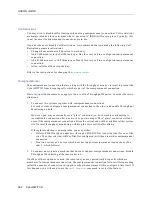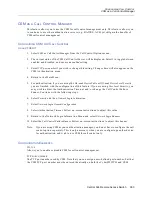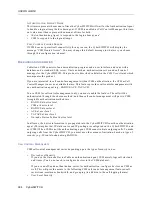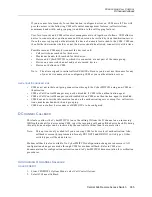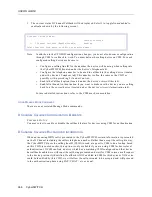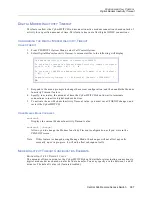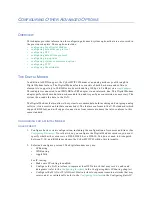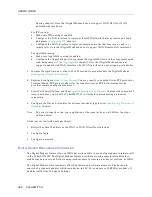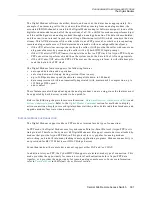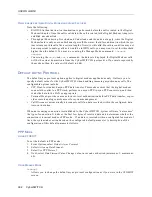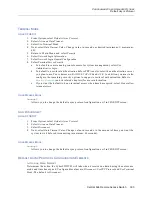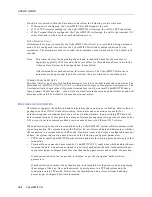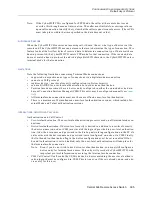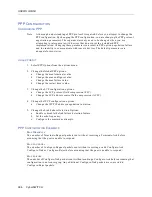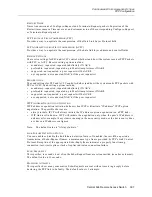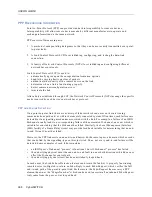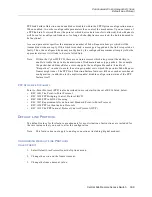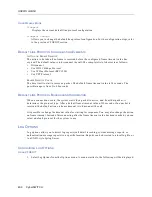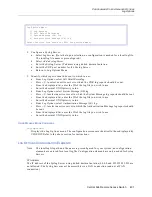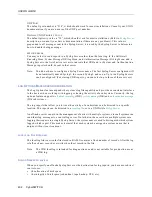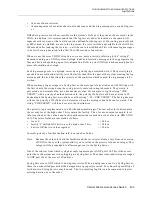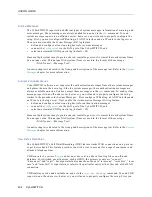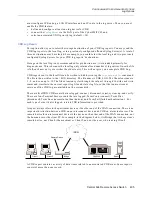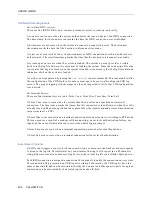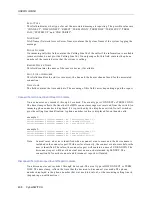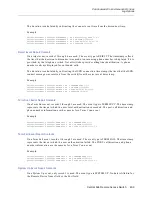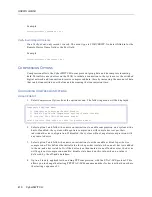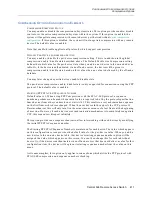
USER’S GUIDE
396 CyberSWITCH
PPP C
ONFIGURATION
C
ONFIGURING
PPP
Note:
A thorough understanding of PPP protocol is required before you attempt to change the
PPP configuration. By changing the PPP configuration, you are changing the PPP protocol
negotiation parameters. These parameters only need to be changed when you are
attempting to interoperate with devices that do not provide a standard PPP
implementation. Changing these parameters can result in PPP option negotiation failure
and the inability to communicate with remote devices. The default parameters are
adequate for most sites.
U
SING
CFGEDIT
1.
Select PPP Options from the options menu.
2.
Change the Global PPP options.
a.
Change the max terminate value.
b.
Change the max configure value.
c.
Change the max failure value.
d. Change the restart timer value.
3.
Change the LCP configuration options.
a.
Change the LCP protocol field compression (PFC).
b.
Change the LCP address control field compression (ACFC).
4.
Change the IPCP configuration options.
a.
Change the IPCP IP address negotiation initiation.
5.
Change the Link Failure Detection Options.
a.
Enable or disable the link failure detection feature.
b.
Set the echo frequency.
c.
Configure the maximum attempts.
PPP C
ONFIGURATION
E
LEMENTS
M
AX
T
ERMINATE
The number of Terminate-Request packets sent without receiving a Terminate-Ack before
assuming that the peer is unable to respond.
M
AX
C
ONFIGURE
The number of Configure-Request packets sent without receiving a valid Configure-Ack,
Configure-Nak or Configure-Reject before assuming that the peer is unable to respond.
M
AX
F
AILURE
The number of Configure-Nak packets sent without sending a Configure-Ack before assuming that
configuration is not converging. Any additional Configure-Nak packets are converted to
Configure-Reject packets.

